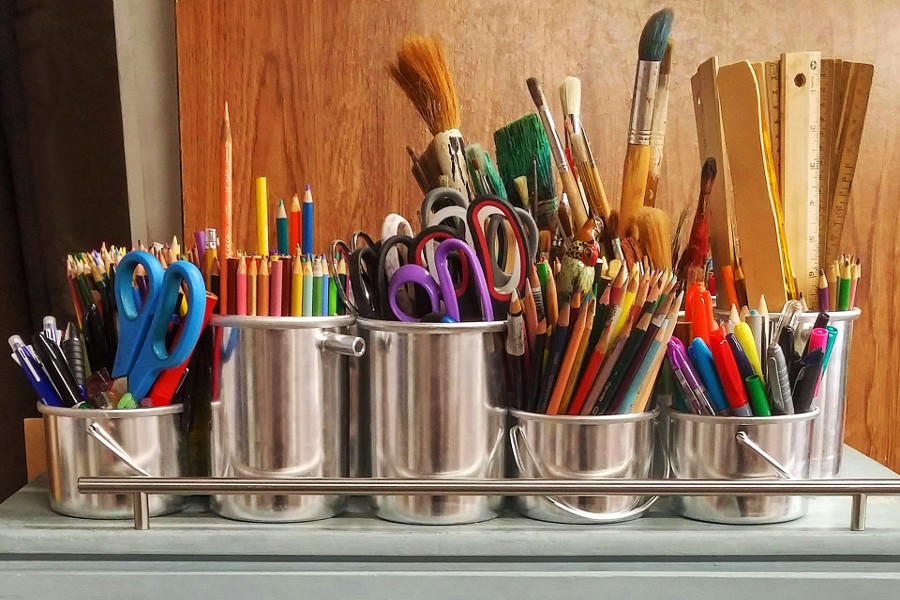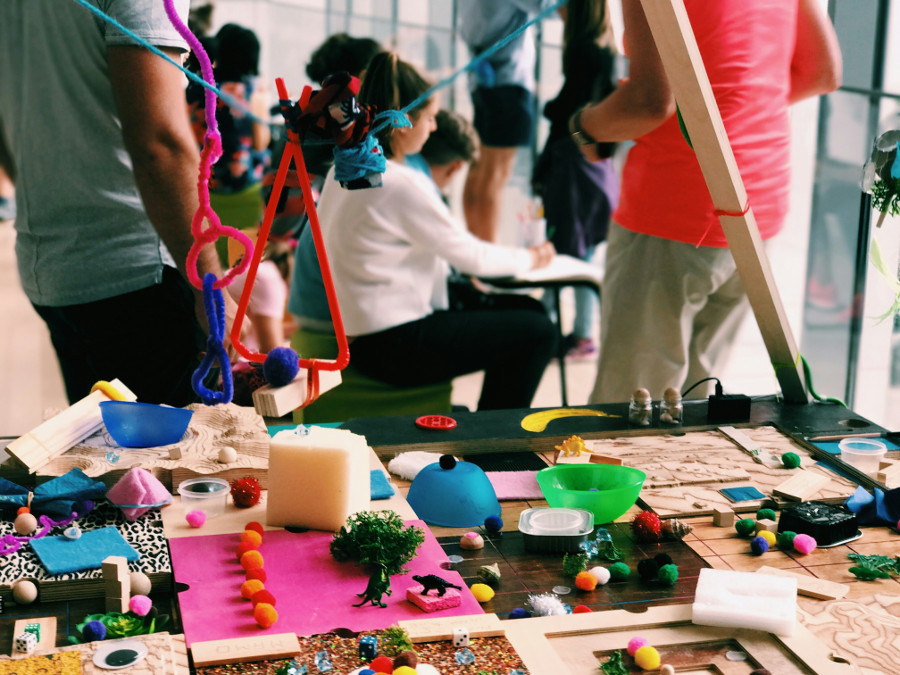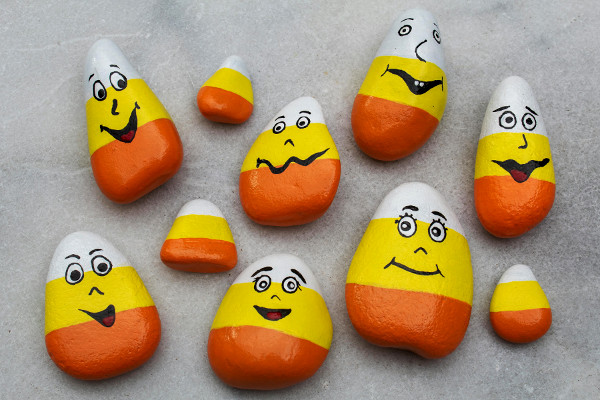How to Start a Craft Project with DIY Kits? - Tips, Tools & Ideas
Starting a craft project with a DIY kit is a fun and rewarding way to unleash your creativity. Whether you’re a seasoned crafter or a complete beginner, these kits offer everything you need to dive into your next project. But with so many options out there, it can be hard to know where to begin. In this guide, we’ve compiled answers to 15 frequently asked questions that will help you get the most out of your DIY craft kit experience.

What materials are included in a DIY craft kit?
A DIY craft kit typically comes with everything you need to complete a specific project, from the materials to the tools. Whether it's fabric, beads, glue, or yarn, everything is neatly packaged to help you bring your idea to life. Depending on the project, the kit may also include tools like scissors, needles, or brushes. Some kits even come with pre-cut pieces to save you time. However, certain items like scissors or batteries might not be included, so it’s always good to check beforehand. The goal of the kit is to provide you with all the essentials, making the crafting process as smooth and enjoyable as possible. There are also many themed craft kits that you can use for creating a special handmade gift for your loved ones for holidays and celebrations such as Christmas, Easter, Mother's Day or even Valentine's Day.
How do I choose the right DIY kit for my skill level?
When picking the perfect DIY kit, it's all about understanding your own skill level. For beginners, look for kits that are labeled as easy or beginner-friendly. These kits will have simple instructions, fewer steps, and materials that don’t require advanced techniques. If you’ve got some experience under your belt, go for something a little more challenging, with instructions that push your creativity. For the pros, advanced kits provide complex projects that may require specialized tools and skills. Reading the product description and reviews is a smart move – they’ll give you a clear idea of what to expect, ensuring you pick the right kit for where you are in your crafting journey.
Are the instructions in DIY kits suitable for beginners?
Yes, most DIY kits are designed to be approachable, even for those with no prior experience. The instructions are usually step-by-step, and many come with pictures to make it easy to follow along. However, the clarity of instructions can vary from kit to kit. If you're a true beginner, you might want to choose kits that specifically cater to novices, as these tend to break down each step with even more detail. If the instructions still feel confusing, check for online tutorials or videos related to your kit – often, the internet is full of helpful resources to guide you through any tricky parts.
Can I customize the projects with the materials provided?
Absolutely! One of the most fun aspects of working with a DIY kit is the opportunity to make the project your own. While the kit provides all the basic materials, you're free to experiment with colors, designs, or additional embellishments. You can swap out beads or fabric, add extra flair, or even combine materials from different kits to create something completely unique. The structured nature of a DIY kit helps guide you, but once you're familiar with the process, customization is where the magic happens. If you have some extra crafting materials at home that you think will upgrade your project, feel free to use them. It's about your own creative vision and how to realize it in your work.

How do I get started with this whole thing?
Begin with finding a clean, organized space where you can spread out and get comfortable. More experienced crafters have a special corner in their homes dedicated to their beloved hobby. What's most important is that you have a big enough space, like a vast table and proper lighting where you can work comfortably on your project. Once you have it, lay out all the materials provided, and carefully read through the instructions. It’s essential to know exactly what steps to follow and which materials to use. If something isn’t clear, take your time to re-read or look for additional resources like videos on Youtube. Don’t rush the process; enjoy each step as you go. And remember, crafting is as much about the journey as it is about the finished project. Take your time, experiment, and most importantly, have fun!
What tools are essential for starting my craft project?
The tools you’ll need depend on the type of DIY kit you’re using. For basic projects, you might just need a pair of scissors, glue, and a paintbrush. More specialized kits, like those for sewing or jewelry making, may require needles, threads, pliers, or even a hot glue gun. Some kits will provide all the necessary tools, while others may ask you to supply common items from home, like scissors or a ruler. Before diving in, take a look at the kit’s description to ensure you have all the essential tools ready to go. If you find that you don't have all the necessary tools, take a short trip to the nearest dollar store, or the local equivalent of that in your region, where you can buy stuff very cheap. After all, this endeavor doesn't have to be exensive. Having the right tools will make the crafting process much smoother.
How do I organize the materials in my DIY kit?
Staying organized is key to enjoying your crafting experience. The first step is to spread out your materials so you can clearly see what you have. Consider grouping items by type – beads, fabric, paints, etc. – to make it easier to find what you need as you go. Small containers or zippered bags work great for keeping everything separate, and labeling each container can help too. If the kit includes multiple parts or steps, you could even organize your materials by the project stage. This organization not only saves time but helps reduce stress, allowing you to fully focus on the creative side of things.
Are there online resources to supplement my DIY kit instructions?
It's not always the case. When it's about a fairly simple craft project, you might be expected to figure out what to do with it. On the other hand, there are kits that come with information about the manufacturer website and where to find instructions on their website. Another great source for additional advice is Youtube. This platform is filled with video tutorials where crafters share tips and demonstrate techniques that might help you better understand the steps. Social media platforms like Instagram and Pinterest are full of inspiration and creative ideas to personalize your projects. As mentioned above, some brands offer additional tutorials, downloadable PDF guides, and online communities that you can tap into if you need extra help or just want to connect with fellow crafters.
Can children use DIY craft kits, and are they safe?
Many DIY kits are perfectly safe for children, as long as you choose the right ones. Look for kits that are labeled as child-friendly, with materials that are non-toxic and age-appropriate. The simpler kits, like coloring sets or sticker crafts, are ideal for younger kids. However, if the kit involves small parts, sharp objects, or tools like scissors or glue guns, depending on the kid's age adult supervision might be a requirement. Make sure the project matches the child’s skill level and that they understand the instructions. That way they won't feel frustrated or incompetent. Crafting together can be a fun bonding experience, and it’s a great way for kids to develop creativity and fine motor skills.
How do I store my completed projects?
Once you’ve completed your DIY project, it’s time to store it in a way that preserves it for years to come. For smaller projects like jewelry or keychains, consider keeping them in a display case or box. Fragile creations, like ceramics or glass art, should be stored in padded containers or on shelves where they won’t be jostled or broken. If your project is fabric-based, folding it neatly and placing it in a drawer or storage bin works well. For larger items, like quilts or paintings, find a spot on the wall or in a display area where they can be admired. Just remember to keep things dust-free and safe from moisture.
To avoid clutter, consider giving some of your project away as a gift. Family members and friends will be happy to receive something perssonal intead of just everything being storebought. Use your projects to accompany your main gift. For example, handmade ornaments, candles, centerpieces or greeting cards can be fun crafting ideas for Christmas. You might also consider to sell your finished projects on places like Etsy or a garage sale. Or just donate them to people who could be in need of some extra home decoration to chear up their livin quarters.
What should I do if I run out of a certain material from my kit?
Running out of a material doesn’t mean your crafting journey has to come to a halt! Start by checking the instructions for any suggestions on how to replace missing materials or where to buy more. Some kits include info on where to find replacements, or you can always visit your local craft store or order online. If the material is essential for finishing the project, try to match it as closely as possible to the original, whether it’s a paint color or fabric type. In some cases, you might even get creative and improvise with what you have on hand, making your project uniquely yours.
Can I gift a DIY craft kit to someone without crafting experience?
Why not? But make sure your gift would be wellcome and the person would actually be open to try out this hobby. The key is to choose a beginner-friendly kit that’s simple to follow. Look for projects that require minimal tools and include easy-to-follow instructions. Many kits even offer pre-cut pieces to save time. You might also want to include a note of encouragement, as starting a new hobby can feel intimidating at first. A DIY kit makes for a great introduction to crafting and can lead to hours of creative fun, whether they complete the project alone or with friends and family.
How can I find inspiration for more individual projects?
Finding inspiration beyond your DIY kit is as easy as diving into the online world. Social media platforms like Pinterest, Instagram, and YouTube are bursting with creative ideas. You can follow crafters who share their own projects and techniques. If you're looking for something specific, search by craft type or materials, and you'll find endless possibilities. Craft blogs and websites often post tutorials and ideas that can spark your next project. If you're more of a hands-on person, visiting local craft stores or even nature can offer a wealth of inspiration. Sometimes, the best ideas come when you least expect them!
Are there community groups or forums for DIY craft enthusiasts?
Absolutely! The internet is teeming with communities where DIY enthusiasts can connect, share their projects, and get advice. Reddit, for example, has various subreddits dedicated to crafting, where people post their work and ask for help. Facebook also has countless groups focused on different types of crafts, from knitting to woodworking. Websites like Ravelry and Etsy are also popular hangout places for crafters, where you can share ideas and get feedback, and on Etsy you can even sell your handmade stuff. These communities are great for inspiration, problem-solving, and connecting with like-minded individuals who share your passion for DIY crafts.
How do I display or use the items I created?
For decorative items like paintings, pottery, or knitted goods, display them in your home where they can shine. Think shelves, mantelpieces, or even your desk. Jewelry and accessories can be worn every day, turning your craft into a personal statement. If you’ve made something functional, like a mug or blanket, use it in your daily life to add a personal touch. Each item you create holds meaning, and finding the perfect place for it – whether it’s on display or in use – lets you enjoy the fruits of your labor every day.



